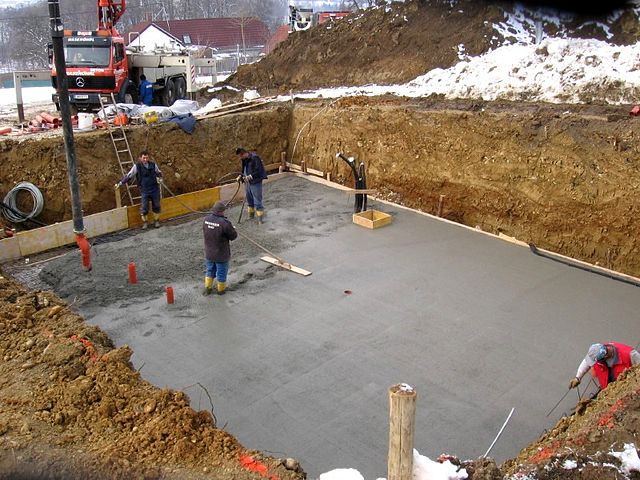NOOOOOOOOOO MY ROUTE TO DUNKIN
Why can’t we use Roman concrete for everything?
This was the question on my mind when I began researching the mysteries that allowed for buildings such as the Colosseum, Pantheon, and ancient roads to remain intact after two millennia of wear and tear. Everybody has those moments when they’re driving and they are hit with the infamous “Detour” sign. They then scramble to figure out where to go while their smartphone tells them to plow right through. Spencer’s theories of questioning the construction of the ancient pyramids got me thinking about how in the world Romans could have created buildings that have lasted ~2000 years and how modern engineers haven’t picked up on it.

Power Ranking Modern and Roman Concrete?
Roman Concrete – ★★★☆☆
Sustainability – ★★★☆☆
The process of manufacturing Roman concrete is significantly less carbon intensive than modern concrete due to the lower temperature needed (two-thirds) for the production of the lime-based binder.
Durability – ★★★★☆
Roman concrete was not reinforced by any steel, significantly lengthening its life span (explained later). The materials used (volcanic ash or rock), also allowed for rare minerals to grow from either exposure to seawater or rain, which made the concrete grow stronger as these minerals would serve as ways to plug gaps within the concrete.
Strength – ★☆☆☆☆
Roman concrete is stated to be approximately 10 times weaker than modern concrete. Additionally, Roman concrete has no steel reinforcements, so its tensile strength is very poor. Building skyscrapers and long bridges common in modern day cities with Roman concrete would be a public safety hazard. Finally, it would take years for Roman concrete to “cure” and reach their max strength, whereas Portland cement tends to take just about a month.
Cost – ★★★☆☆
Due to the requirement for volcanic ash, importing this material would prove to be very costly when trying to manufacture Roman concrete, especially trying to import it to any region without easy access to volcanos. Roman concrete is also much less “soupy” and viscous, resulting in the need for it to be hand molded into shapes using specialized equipment, which increases labor costs and how long it takes to construct something.
Modern Concrete – ★★★★☆
Sustainability – ★★☆☆☆
Not to be a hater, but modern concrete absolutely sucks at sustainability. Just a single cubic yard of it releases 400 pounds of CO2 into the atmosphere, this all adds up to account for 8% of the world’s carbon dioxide emissions. A majority of the process that releases the most CO2 is the heating process, and there is currently research being done on alternatives to decrease emissions so we’ll give it 2 stars instead of 1 for effort.
Durability – ★★★☆☆
Modern concrete’s (Portland cement) lifespan can range from 50 to 100 years given enough care, which admittedly is not too shabby. The reason for this is due to a secret ingredient within it, steel. Modern concrete is reinforced with steel to compensate for its lack of tensile strength. This allows for the creation of thin slabs of concrete and structures like long highway overpasses, bridges, and skyscrapers. However, due to concrete being porous, water, salt, or other corrosive elements can sometimes permeate the steel within the concrete, causing it to rust and create iron oxide, which expands and causes deterioration.
Strength – ★★★★☆
As stated before, modern concrete is 10 times stronger than Roman concrete. This can be obviously seen when we have cars and semi trucks that weigh around 13.5 tons going 65 mph+ (90+ if you live in the great state of New Jersey) daily, when compared to roman raedas which carried luggage to a max of 330 kg and were pulled by two oxen or horses. This also does not take into account the steel reinforcements usually placed within concrete which allow it to have much better tensile strength.
Cost – ★★☆☆☆
The price of concrete today sits at a cheap rate of $117 per cubic yard. It is also super viscous which allows for it to be poured into molds, saving time and money by reducing the labor required for construction. Due to its fast curing process, it does not take long for it to reach its max strength, allowing for it to be easily set down and be ready to use.
Conclusion
Between Roman concrete and Portland cement, I believe that Portland cement is the winner for best concrete due to its ability to be mass-produced, its cheap cost, as well as its relative strength that forms quickly after being poured. It should be also noted that these Roman structures that have survived so long were built in areas of relatively forgiving climate without freeze-thaw cycles to affect the concrete. Not to mention, the Roman structures we do see today are most likely a tiny remnant of the thousands of structures built 2 millennia ago. Thus, we can not state for a fact that all structures made of Roman concrete would last as long as ~2000 years.
Authors note: My name is Kevin Han and I am a sophomore at Colgate University (Haha toothpaste yeah I get it, you are very original). Infrastructure fascinates me and getting down to the nitty gritty details is something that I find super interesting. This made talking about concrete (something that we ordinarily barely think about save for the complaints about our tax money being wasted on not fixing potholes) something I was very interested in.
